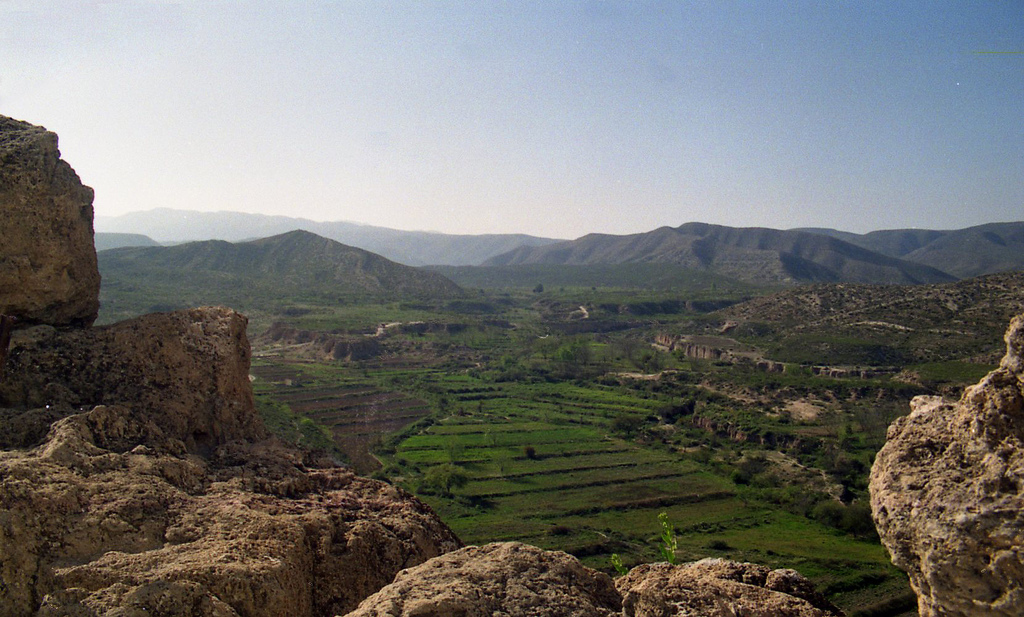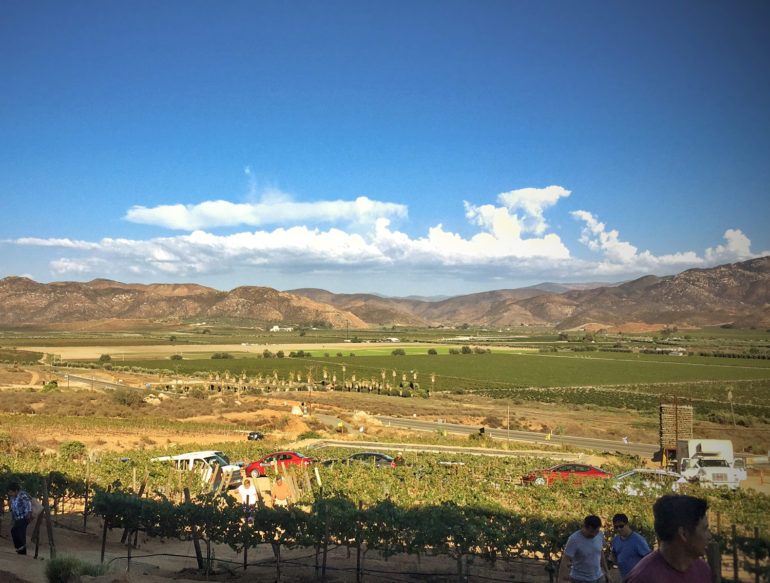Believe it or not, Mexico makes wine too! The first vineyards in North America were planted in Mexico. Here’s a little overview of what’s to know about modern Mexican wine country.
Modern Mexican Wine
Grapes were first planted in Mexico during the 16th century by the Spanish. Despite the region’s long history, the advance of modern Mexican wine is as recent as the 1970s. The region is a melting pot of French, Spanish, and Italian grapes, from Nebbiolo to Chenin Blanc, making up 7,700 acres of vineyards. Wine blends are quite popular here, although they don’t always follow European traditions. For example, you might find Cabernet Sauvignon blended with Grenache and Barbera. More recently, single varietal wines are also gaining in popularity. Mexican wine is still very much a frontier of wine.

Due to the fast growth of Mexico’s wine country, sources tell us that Cabernet Sauvignon, Chardonnay and Tempranillo are now the most planted wine grapes of Mexico.
- Red Wines include Cabernet Sauvignon, Zinfandel, Cabernet Franc, Carignan, Grenache, Merlot, Malbec, Syrah, Petit Verdot, Tempranillo, Nebbiolo, Dolcetto, Barbera, Petite Sirah, and Pinot Noir.
- White Wines include Chardonnay, Chasselas, Chenin Blanc, Macabeo (aka Viura), Muscat Blanc, Palomino, Riesling, Semillon, Sauvignon Blanc and Viognier.
How can wine grapes grow in such a hot climate?
For those who know, the 30th parallel (above and below the equator) is considered the theoretical boundary of successful grape growing. So it might be a surprise that a region so close to the tropics can grow grapes at all. Fortunately, the region is arid (grapes don’t like humidity) and vineyards are located at high altitudes, which provides cooler air and an increased diurnal shift (e.g. it’s cold at night). Of course, because it’s so dry, irrigation is almost always required.
Here’s a breakdown of the major regions to know:
The North: Baja and Sonora
The vast majority of wine production (about 85%) occurs in the state of Baja California, which is just a smidgen north of the 30° latitude line. The region benefits from the cooling breezes of the Pacific Ocean.
Baja California
There are over 150 wineries in the Baja Peninsula, and the number is growing. Most are fairly small scale operations, bottling under 100,000 cases annually. The Mediterranean climate, morning fog from the Pacific, and valley topography feel pretty similar to parts of California. The major wine-making sub-regions here including Valle de Guadalupe, Valle de Calafia, Valle de San Vincente, and Valle de Santo Tomás, are characterized by granite-rich alluvial soils – attributes you might expect to find in the Northern Rhône Valley of France.
Some have dubbed Valle de Guadalupe the “Napa Valley of Mexico.”

Vineyards next to Hotel Endémico in Ensenada, Valle de Guadalupe in Baja Mexico – by Hernán García Crespo
Valle de Guadalupe is the prominent region of the Baja Peninsula and has become a thriving area for “boutique” wineries and a prime tourist destination.
Wines from this region are typically full-bodied, ripe, jammy, and robust (higher alcohol), and grapes have thick skins to add a deep color. As fruity as this sounds, Baja wines are often said to have a “stoney minerality” or saline-like component to their taste, which is attributed to groundwater irrigation and proximity to the ocean.
Sonora
Located across the Gulf of California from Baja, on the northwest coast of the Mexican mainland, Sonora is the other northerly Mexican wine area. Though some wine is produced here, most of the grapes are grown in its two main dry regions, Hermosillo and Caborca, and are used for brandy or raisin production, respectively.

La Laguna: Valle de Parras
The La Laguna region straddles the states, Durango and Coahuila. Durango grapes are primarily used for brandy production, but Coahuila contains a prized wine growing area, Valle de Parras. The Valle de Parras is home to the oldest winery in North America, Casa Madero, founded in 1597! The region was originally planted by the Spaniards and vineyards here are located at nearly 5000 feet altitude, providing a much cooler microclimate suitable than the surrounding areas and very well-suited for wine grape growing. You’ll find several familiar varieties here including Cabernet Sauvignon, Tempranillo, Merlot, Shiraz (Syrah), Sauvignon Blanc, Chenin Blanc and Chardonnay. The region appears to be best suited for warmer climate varieties such as Syrah, Chenin Blanc, Cabernet and Tempranillo.
Central Mexico: Zacatecas, Aguascalientes, Guanajuato and Querétaro
Mexico City’s most proximate wine country destination sits at elevations of up to 6,500 feet. Soils here are composed of loamy clay, which helps retain moisture in the semi-desert climate. The majority of grapes in this area are used for brandy production, but due to its location close to Mexico’s largest city, some fine wine can be found here as well. For example, Spain’s Freixenet (“freshen-nay”) has an outpost here called Cavas Freixenet, which is the largest producer and specializes in, of course, sparkling wine production.
Mexican Wine Terms
- varietales: single varietal wines
- combinadas: wine blends
- vinos espumosos: (foamy wine) sparkling wines

Along the Ruta del Vino in Mexico’s Valle de Guadalupe wine region in Baja. photo TTseng
Where To Find Mexican Wine
Although Mexican wine is now exported to 38 countries, it is not that easy to find. There are two main options here. For one, find a bottle near you (wines from the predominant Baja region are available online) or go hit the road, the “Ruta del Vino,” Mexico’s wine route in Baja, California. Labeled road markers connect over fifty wineries from Tecate down through Ensenada, including the famed Valle de Guadalupe region. Winery tourism is growing in popularity here and many accommodations and high-end eateries are available to complement your wine tasting experience. For an added bonus, plan your trip around the Fiesta de la Vendemia (Vintage Festival) which takes place every August in Ensenada and Valle de Guadalupe.
Baja Wine Country
When visiting the Baja wine region, be sure to check out the new wine museum, El Museo de la Vid y el Vino, whose website homepage proclamation is inspiring: “There are only two types of wine, the good wine and the better wine.”

